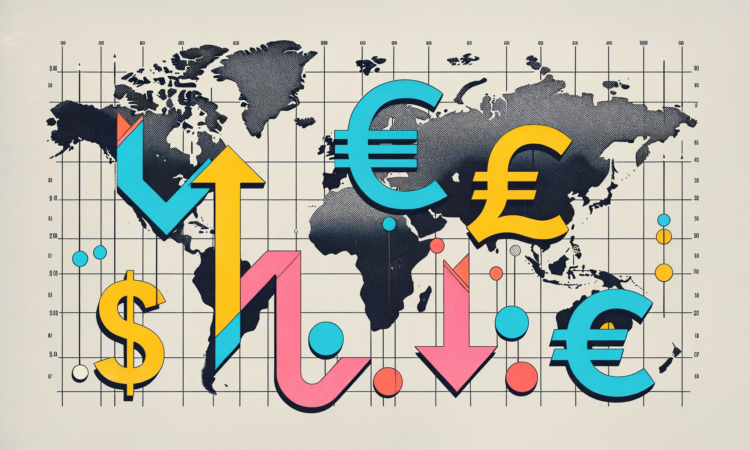
What’s going on here?
Global currencies faced mixed fortunes on Wednesday as the US dollar dropped overnight amid weak retail sales data. This news raised expectations for earlier rate cuts by the Federal Reserve, affecting the euro, sterling, and other major currencies.
What does this mean?
The dollar struggled for direction, pressured by weak economic activity that hinted at possible rate cuts by the Federal Reserve later this year. Investors now estimate a 65% chance of easing beginning in September, with as much as 50 basis points of reductions expected in 2024. Meanwhile, the euro hovered near a 1-1/2-month low, burdened by political uncertainty in France and potential fiscal laxity. Sterling received a boost from stronger-than-anticipated British service inflation, showing resilience with a 0.20% rise against the dollar to $1.2732. The Swiss franc also climbed, reaching a seven-month high against the euro, amid speculation of Swiss National Bank intervention to stabilize the currency.
Why should I care?
For markets: Navigating the global currency landscape.
Forex markets are reacting to a complex web of economic data and policy signals. With the dollar index flat at 105.27, traders are balancing the prospects of US federal rate cuts against ongoing inflation concerns in Europe and elsewhere. Sterling’s gains reflect confidence in the UK’s economic activity, while apprehensions around French political stability and Eurozone fiscal discipline keep the euro under pressure. Investors should keep a close eye on policy movements from the Federal Reserve and the European Central Bank, as these will shape future market dynamics.
The bigger picture: Economic policies and political shifts.
Around the globe, monetary policies and political developments are guiding currency movements. Marine Le Pen’s comments about cohabitation with President Macron may imply potential fiscal restraint in France, which, if realized, could alleviate some of the pressure on the euro. The European Commission’s proposal for disciplinary actions against several EU countries emphasizes the strained fiscal landscape within Europe. Meanwhile, the Reserve Bank of Australia’s hawkish tone supports the Australian dollar, and speculation about Bank of Japan’s cautious approach to monetary tightening keeps the yen stable. Markets are also watching for any intervention hints from the Swiss National Bank, key for investors operating in these diverse but interconnected economies.




